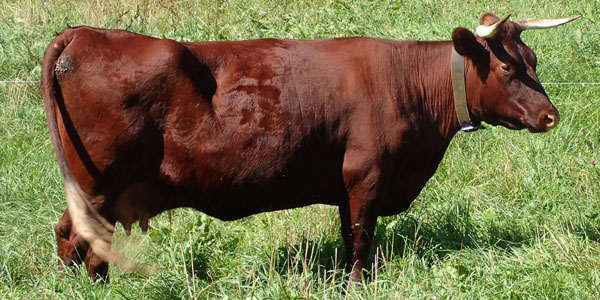
Permanent Corncribs
This excerpt is from Small Farmers Journal volume twenty-eight number three, and discusses building permanent corn cribs.
Permanent Corncribs
Storing ear corn in a crib is the most practical way to hold corn on many farms. The crib should be placed away from other buildings or trees to allow free circulation of air through and around it. Placing the crib with the long walls exposed to the prevailing wind helps the circulation of air through the corn. The walls must be open to allow the air to circulate freely. Wood slats with openings between them, welded-wire mesh or coarse hardware cloth, or snow fence, if well supported, all make satisfactory crib walls. The floors can be either tight or open, but a wood floor must be far enough from the ground to prevent corn from drawing dampness and to prevent rats and other rodents from finding harbor under the crib. Concrete floors are satisfactory, and it is recommended that they be built with concrete foundations. A concrete floor needs a gravel fill at least six inches thick, and a moisture barrier of roll roofing or some similar material under the slab to prevent ground moisture from getting to the surface of the floor.
The width of the crib is important. Corn in cribs that are more than 4 ½ feet wide may not keep unless it is artificially dried. With wide cribs and natural air-drying, some corn is sure to spoil.
Mechanical loading and unloading saves time and labor in getting the corn in and out of the crib. Doors high in the wall and spaced not more than eight feet apart make it possible to fill the crib with an elevator and to distribute the corn throughout the crib with little or no hand spreading, or to fill the crib by shoveling. With hatches in the roof, also not more than eight feet apart, an elevator can load the crib to capacity.
The corn can be unloaded either through a trench made in the concrete floor in which a drag conveyor can be placed or by allowing the corn to feed from the unloading doors in the wall of the crib into an elevator. If the corn is fed in small quantities daily, a mechanized unloading arrangement may not be necessary.
An extension to the upper end of the elevator or an inclined chute with a screen bottom made of two inch square welded wire onto which the elevator discharges, makes a good screen for separating shelled corn, broken pieces of cobs, and other trash from the ear corn. Trash accumulating in the crib reduces air circulation through the corn and increases the possibility of mold. Moving the elevator spout occasionally as the crib is filled prevents accumulation of shelled corn and other debris, which is a common cause of caked and spoiled corn.
If you are interested in more information on all agricultural pursuits, consider subscribing to the Small Farmers Journal, ONLINE or PAPERBACK. This piece is from back issue Volume 28 Number 3, and is available HERE.








